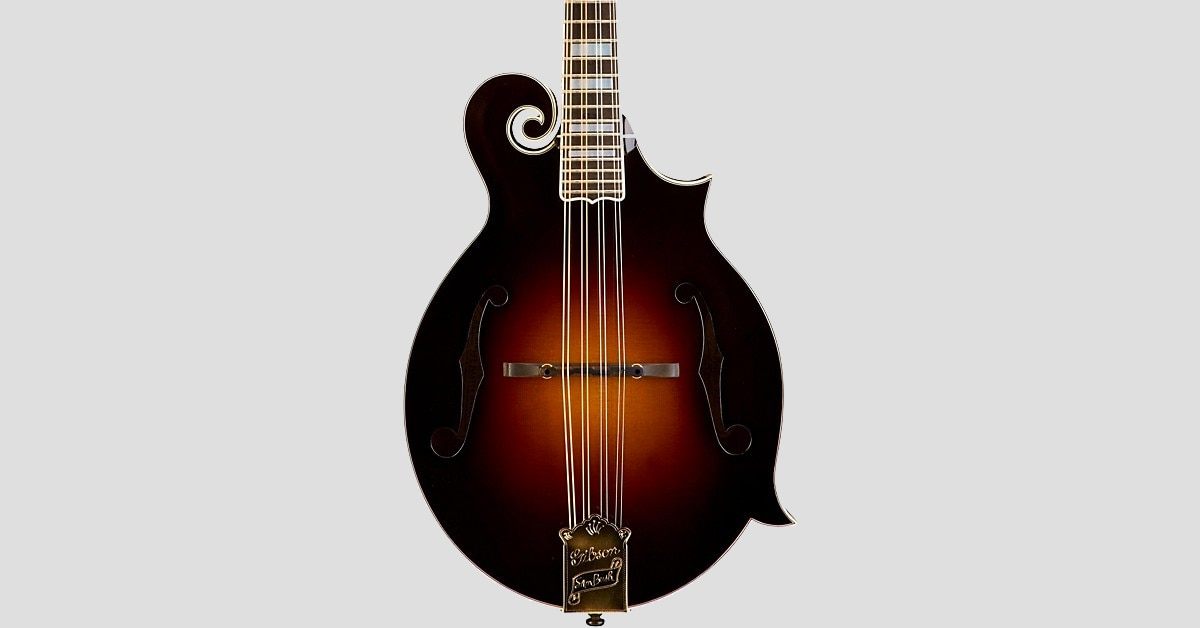Because different mandolins, playing techniques, and the music genres in which they’re used vary greatly, there’s no single answer to the question which strings are right for you and your instrument. In this guide we’ll walk you through the types of mandolin strings that are available and detail their playing and tonal characteristics.
One thing’s for sure though: a fresh set of well chosen strings will quickly and inexpensively restore the sound of a mandolin that has lost its sonic luster. Like a dirty windshield that you’ve grown accustomed to, putting on a new set of strings (or washing that windshield) will restore the clarity that you hardly had noticed was missing.
Table of Contents
String Gauges
String Gauge Sound and Playing Characteristics
Mandolin String Construction Materials
Types of String Windings
Signs That it’s Time for a String Change
So Which Strings are Right for Me?
String Gauges
String gauges refer to the thickness of a string’s diameter as measured in thousandths of an inch. Mandolin strings are sold in sets that designate their gauges using terms usually ranging from light to heavy. Paired courses of mandolin strings are almost always the same gauge since they’re tuned to the same note and played together. Manufacturers may specify gauges on their packaging either by listing the gauges for all eight strings or just list the gauges of the four paired courses. Though there are slight differences among manufacturers, here are typical gauges based on gauge weight designations:
Light: .010 - .014 - .024 - .038
Medium: .011 - .015 - .026 - .040
Heavy: .0115 - .016 - .026 - .041
Some string sets are sold using intermediate designations such as medium/heavy. Over time as you develop clear preferences for specific gauges, you may find these subtly different gauge ranges a better fit for for your instrument and playing style.
Finding the right gauges for your mandolin and playing style can take a certain amount of trial and error.
Most modern mandolins have truss rods that reinforce and allow adjustment of their necks. These mandolins can usually safely handle any of the gauges available. If you happen to own an old mandolin that has no truss rod, lighter gauges that exert less tension are a safer bet since they are less likely to cause neck bowing. If in doubt, consult a knowledgeable stringed instrument repair person.
String Gauge Sound and Playing Characteristics
Lighter gauges are easier to fret and are a good place to start for beginning mandolin players. Many beginner-level instruments come with light-gauge strings. Lighter strings have a brighter sound but produce less volume and sustain, and may not bring out all the resonance and tonal richness that your mandolin can produce.
Heavier gauge strings are somewhat more difficult to fret due to their greater tension. They produce richer, deeper tone with more sustain and volume. They’re also are better suited for mandolinists who use a strong picking attack, allowing the player “dig in.”
Mandolin String Construction Materials
Here are the most common mandolin string compositions and their sound characteristics:
Phosphor Bronze: By far the most popular alloy composition, phosphor bronze strings offer a balance between tonal richness and brilliance. 80/20 phosphor bronze alloys are especially popular with many players who find they tend to last longer without losing their brilliance.
Nickel Plated Steel: They typically have a brighter tone than bronze strings, and are popular among electric mandolin players.
Stainless Steel: Popular with some players due to their oxidation resistance, they tend to have a bright timbre. If you have acidic perspiration, they can be a good choice for longevity.
Chrome Steel: They typically have a tin-plated silver steel core with a chrome steel wire wrap that produces great clarity without a metallic twang.

Phosphor bronze strings such as this D’Addario EJ73 set are perennial favorites with seasoned mandolin players.
Coated Strings: These strings have an outer polymer coating that extends their life by resisting oxidation. Manufacturers use various polymer formulations over different string cores, so it is difficult to generalize about their sound.

You’ll get more mileage out of coated mandolin strings such as these Elixir Nanowebs due to their corrosion resistance.
Types of String Windings
The vast majority of wound mandolin strings are roundwound—that is the strings have a wound outer wire wrap. The ridges resulting from the wrap wire can cause some noise when fretted. Less common are flatwound strings. They are made the same way as roundwounds, but the wrap wire is pressed or machined to produce a flatter, somewhat smoother surface than can eliminate finger squeaks and provide smoother fretting.
Signs That it’s Time for a String Change
- Getting in tune and staying there is more challenging than usual.
- You’re seeing rust or discoloration on the strings.
- String wraps are unwinding exposing the core.
- Your tone sounds “flat” or “dead.”
- You can’t remember the last time you changed strings.
So Which Strings are Right for Me?
As we said at the outset, there is no single answer to this perennial question. The same set of strings can sound vastly different on two different mandolins. Experimentation is the key. Since mandolin strings are quite inexpensive, the process of narrowing down your choices is not a costly one.
When changing strings, note the date on the package and keep it in your case. You can also note your observations about playability and sound as the strings become broken in and age. Reviewing your notes will help in narrowing down your choices as you experiment with various brands and string types.
If you’re still unsure about which strings to try, we invite you to call a friendly and knowledgeable Musician’s Friend Gear Head at (800) 449-9128.
Learn more about mandolins with our expert Mandolin Buying Guide.
If you’re thinking about a new mandolin, Musician’s Friend offers a large selection ranging from inexpensive starter instruments to the finest professional mandolins. You can explore the full collection of mandolins here.








































































































































